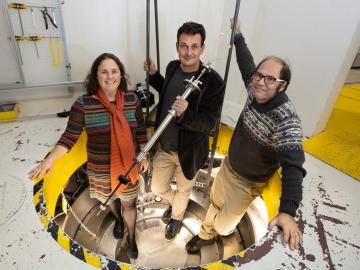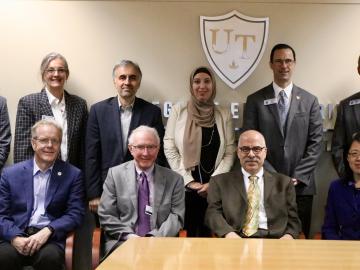
Filter News
Area of Research
News Topics
- (-) Composites (16)
- (-) Energy Storage (25)
- (-) Materials Science (56)
- (-) Mercury (2)
- (-) Microscopy (14)
- (-) Security (17)
- 3-D Printing/Advanced Manufacturing (50)
- Advanced Reactors (13)
- Artificial Intelligence (58)
- Big Data (36)
- Bioenergy (27)
- Biology (23)
- Biomedical (23)
- Biotechnology (11)
- Buildings (29)
- Chemical Sciences (30)
- Clean Water (12)
- Computer Science (95)
- Critical Materials (8)
- Cybersecurity (8)
- Education (2)
- Emergency (3)
- Environment (60)
- Exascale Computing (27)
- Fossil Energy (4)
- Frontier (23)
- Fusion (21)
- Grid (24)
- High-Performance Computing (45)
- Hydropower (1)
- Isotopes (24)
- ITER (2)
- Machine Learning (28)
- Materials (24)
- Mathematics (7)
- Microelectronics (2)
- Molten Salt (6)
- Nanotechnology (17)
- National Security (34)
- Neutron Science (54)
- Nuclear Energy (42)
- Partnerships (29)
- Physics (24)
- Polymers (12)
- Quantum Computing (20)
- Quantum Science (35)
- Simulation (24)
- Space Exploration (9)
- Statistics (3)
- Summit (25)
- Transportation (34)
Media Contacts

New computational framework speeds discovery of fungal metabolites, key to plant health and used in drug therapies and for other uses.

Technology Transfer staff from Department of Energy’s Oak Ridge National Laboratory attended the 2024 Consumer Electronics Show, or CES, in Las Vegas, Jan. 8–12.

Electric vehicles can drive longer distances if their lithium-ion batteries deliver more energy in a lighter package. A prime weight-loss candidate is the current collector, a component that often adds 10% to the weight of a battery cell without contributing energy.

Researchers at Oak Ridge National Laboratory demonstrated that an additively manufactured polymer layer, when applied to carbon fiber reinforced plastic, or CFRP, can serve as an effective protector against aircraft lightning strikes.

Scientists at the U.S. Department of Energy’s Brookhaven National Laboratory have new experimental evidence and a predictive theory that solves a long-standing materials science mystery: why certain crystalline materials shrink when heated.

Two of the researchers who share the Nobel Prize in Chemistry announced Wednesday—John B. Goodenough of the University of Texas at Austin and M. Stanley Whittingham of Binghamton University in New York—have research ties to ORNL.

ORNL and The University of Toledo have entered into a memorandum of understanding for collaborative research.

Quanex Building Products has signed a non-exclusive agreement to license a method to produce insulating material from ORNL. The low-cost material can be used as an additive to increase thermal insulation performance and improve energy efficiency when applied to a variety of building products.

Researchers at Oak Ridge National Laboratory proved that a certain class of ionic liquids, when mixed with commercially available oils, can make gears run more efficiently with less noise and better durability.

A team including Oak Ridge National Laboratory and University of Tennessee researchers demonstrated a novel 3D printing approach called Z-pinning that can increase the material’s strength and toughness by more than three and a half times compared to conventional additive manufacturing processes.


